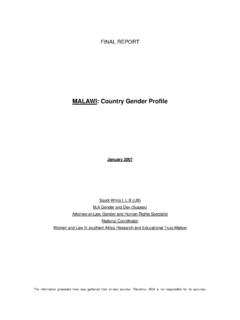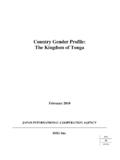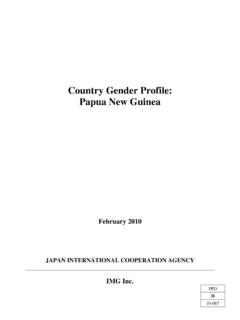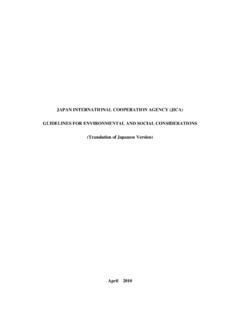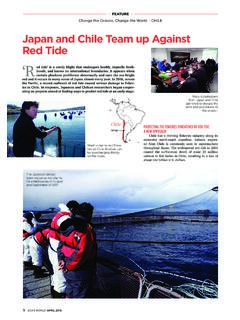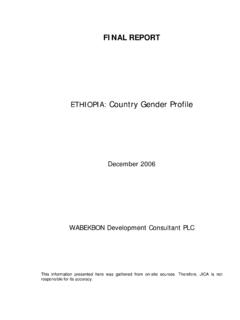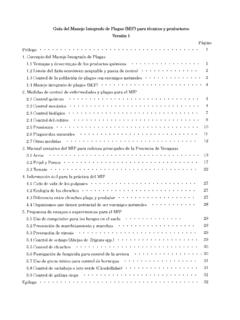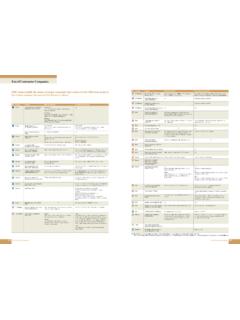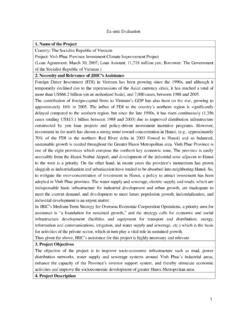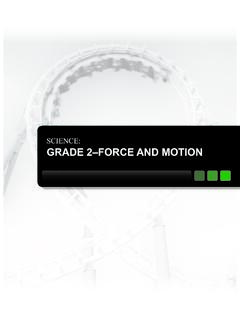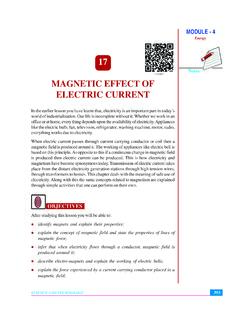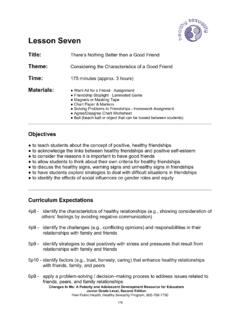Transcription of Module 6: Sample Lesson Plans in Science - JICA
1 Module 6 Sample Lesson Plans in Science Module 6: Sample Lesson Plans in Science User s: All personnel at the school level Objectives of this Module : Module 6 provides CL and teachers with Sample Lesson Plans for challenging topics in Science . These Sample lesso n Plans can be u sed or modified for SBI/CBI demonstration less ons. All the Sample Lesson Plans are in accordance with the Ministry of Education ( MOE) Teaching Syllabus for Integrated Science (Primary 4-6). The mo dule also p rovides concise explanation of what challenging topics are at the beginning of the Module .
2 The Module has Sample Lesson Plans on some selected topics. Sample Lesson Plans have been prepare d on topics such as; Properties of S oil and Characteristics of Water and Other Liquids , looking at Less on Overvi ew, Less on P lan, Teaching Hints, Use of Chalkboard and Engl ish as a Tea ching T ool. On the other hand, the other topics; Rusting , Prod uction of Sound and Properties of Air are covered by Lesson P lan and English as a Tea ching Tool only. Below is a brief explanation a bout them. Lesson O verview consists of introduction , objectiv es of the topic and the Lesson and Introductio n illustrates the importance and relevance of the Lesson to real life.
3 All the objectives . are taken from the syllabus. states relevant previo us knowledge that pu pils are expected to have. Lesson P lan (sometimes also called Lesson notes) is a written down approach to the teaching of a particular topic. This written down approach is sequential and direct s the teacher in his/her teaching activities. A well plan ed Lesson helps the teacher to teach with confidence. The format of the Lesson plan is the same as t he stan dard lesso n plan that GES appr ov es. The Sample Lesson Plans on Properties of S oil and Characteristics of Water and Other Liquids.
4 Also contain Lesson plan with teaching hints on the next page of the standar d Lesson plan. The Lesson plan with teaching hints is the same as the standar d Lesson plan on the previ ous page except for the speech blobs (rounded rectangular shapes) on the Lesson plan. The speech blobs suggest where each of the teaching hints can be used. Tea ching Hints provide suggested teaching approaches. It is designed that each of the teaching hints elaborates how to deliver a particular teaching activity ( Introduction, Activity 1,2 ) in the developme nt of a Lesson .
5 Because many of these teaching activities are linked with the core points of the Lesson , successful delivery of the teaching activi ty should lead to a sound understandi ng of the core points. The teaching hints deal mainly with general teaching approaches and questioning skills for particular teaching activities. The general teaching approaches describe how the teacher can lead pupils to the core points through the activities. When the activity is an experiment, the teaching approach explains how to conduct the experiment, paying special attention to the process skills of Science .
6 The questio ning skills should also help the teacher to lead pupils to reach a good understandi ng of the core points. It is recommen ded that teachers develo p better teaching approaches and questio ns for the Lesson and other lessons once they get the ideas that the teaching hints discusse d/prese nted. Use of Chalkboard shows a suggested chalkboa rd plan. Well-organised chalkboard helps pupils 1. Module 6 Sample Lesson Plans in Science understand what they are learning in the Lesson . Teachers need to consider ho w to use and organi se the chalkboa rd. T h is part can help them conside r and im prove upon the way they plan the use of the chalkboa rd.
7 The section Engl ish as a Teaching Tool suggests effective use of English language in the Science lessons. The section gives examples of English that can be used in particular activities. By using the actual content of the Sample lessons, it helps pupils to understand Science content better. It should be noted that a section of Module 4 highlights the use of English languag e as a teaching tool for other s ubjects, with a gene ral and rather th eoretical explanation of the use of it . Appendix provides m ore ideas a nd activities for challenging topics in Science .
8 Dev eloping Lesson Plans by CL a nd t eachers CL and teachers mus t be encouraged to develo p the ir Lesson Plans . Once CL and teachers have become familiar with the Sample Lesson Plans and their teaching and learning strategies, it is strongly recommen ded that CL and teachers start creating their own original Lesson Plans of challenging topics. C L and teachers have opportunities to develop lesso n Plans o f challenging topics when preparing their SBI/CBI. Besides , CL can improve Lesson Plans when discussing the challenging topics with other CLs in CL Sourcebo ok Training.
9 2. Module 6 Sample Lesson Plans in Science Table of Contents Identification of Challenging ..4. Sample Lesson ..6. Lesson 1: Primary 5 Properties of ..7. 1. Lesson ..7. 2. Lesson Plan ..9. 3. Teaching ..12. 4. The Use of ..18. 5. English as a Teaching ..19. Lesson 2: Primary 4 Characteristics of Water and Other 1. Lesson ..21. 2. Lesson Plan ..23. 3. Teaching ..27. 4. The Use of ..30. 5. English as a Teaching ..31. Lesson 3: Primary 6 Rusting (Characteristics of Metals and Non-metals)..32. 1. Lesson Plan ..32. 2. English as a Teaching ..34. Lesson 4: Primary 6 Production of Sound (Energy).
10 36. 1. Lesson Plan ..36. 2. English as a Teaching ..39. Lesson 5: Primary 4 Properties of Air ..40. 1. Lesson Plan ..40. 2. English as a Teaching ..42. Appendix Some Ideas for Challenging Topics ..43. 1. How Does Light Travel? ..43. 2. Making a ..44. 3. The Law of ..45. 4. Simple Electrical Circuit ..46. 5. Electrical Circuits with Bulbs in Series ..47. 6. Electrical Circuits with Cells in Series .. 48. 7. Electrical Circuits with Cells in ..49. 8. Electrical Circuits with Bulbs in Parallel ..50. 9. Earthquake Model Movement of the Plates of the 10. Improvisation of Distillation Apparatus.
